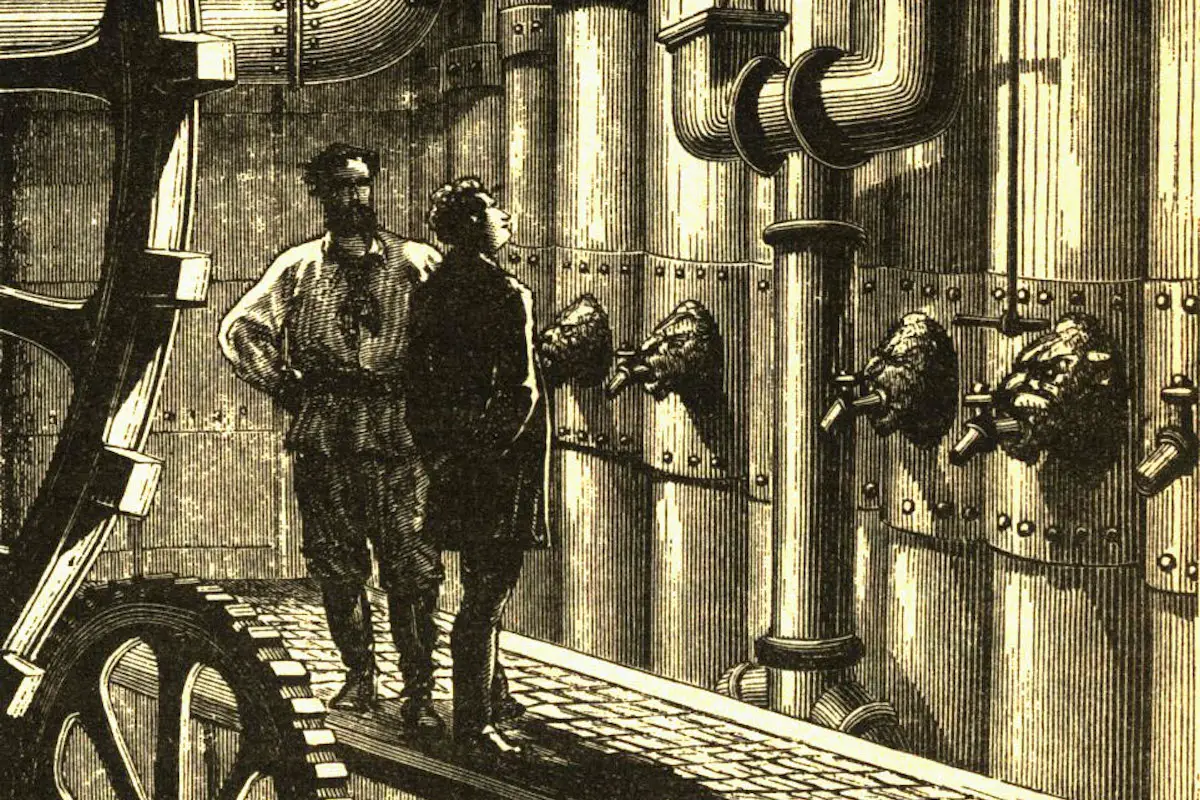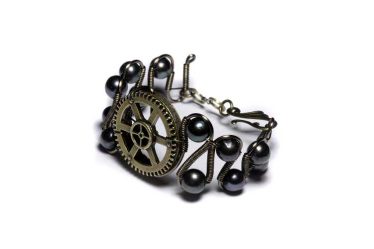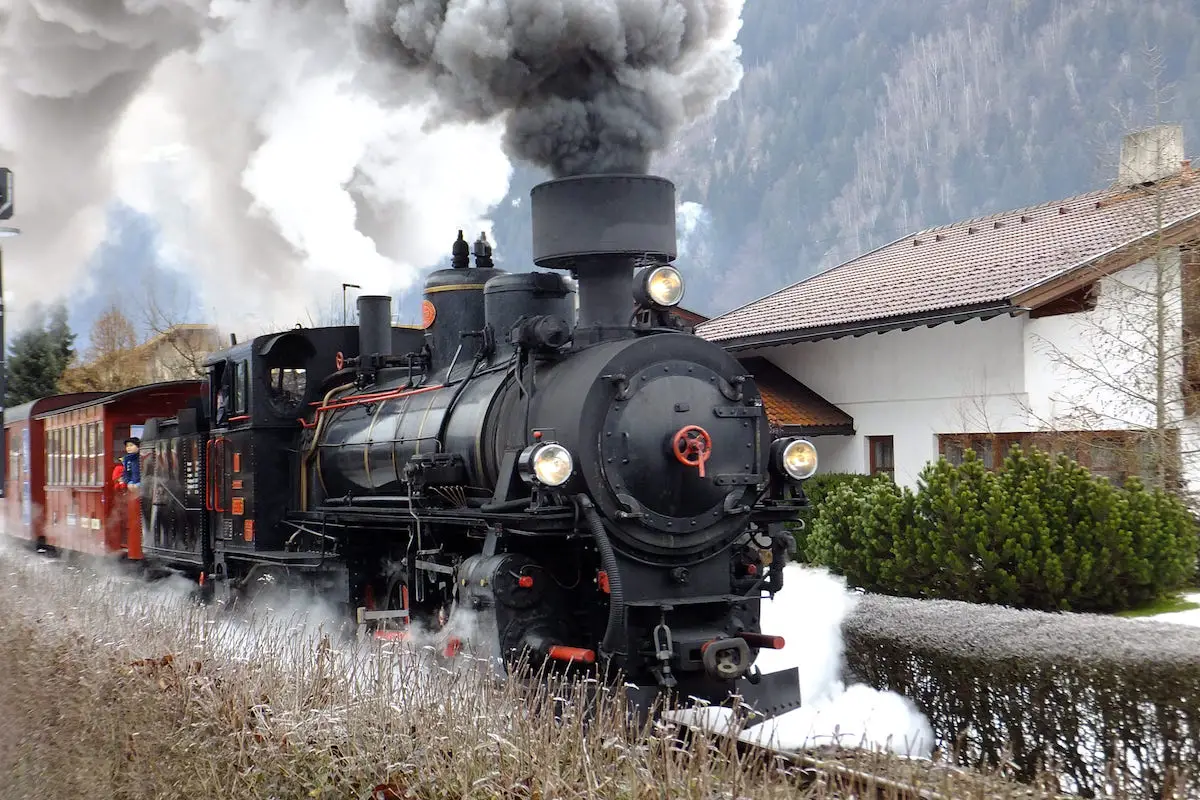
steampunker.co.uk is a participant in the Amazon Services LLC Associates Program and other affiliate advertising programs designed to provide a means for us to earn fees by linking to Amazon.com and affiliated sites. Affiliate links may be used on this page and in steampunker.co.uk articles, but they do not impact on the price that you pay and they do help me to get this information to you for free. Read my privacy policy for more information regarding affiliates.
Welcome steampunkers, today we are discussing the origins of steampunk. Join me of this journey in my time machine as I take you through the history of steampunk from it’s literary origins to modern developments.
Literary Origins of Steampunk
Steampunk essentially started out as a literary subgenre in the 1970s. The inspiration for this sub-genre comes from as far back as the 19th century, the Victorian era, with authors such as Mary Shelley and H.G. Wells. Authors during this time period frequently wrote about the technology due to the rise in steam powered machinery.
The steam-powered machinery inspired the writers to think about the evolution of this machinery, and how future technology may look.
With authors such as Mary Shelley taking it to the next level and writing about the creation of life in Frankenstein, using the possible evolution of this steam-powered machinery as inspiration. Mary Shelley invented science fiction in 1818 with the creation of Frankenstein, a ghost story turned science fiction.
Other authors such as H.G. Wells’ The War of the Worlds depicts giant mechanical structures that appear to be steam-powered taking over earth by the control of an alien life form.
This type of science fiction novel gained popularity from authors in the 19th century, with the public beginning to appreciate it more in the 20th century, when the sub-genre of Steampunk began. The Victorian setting and steam-powered obsession in early science fiction novels such as The War of the Worlds helped to form the Steampunk aesthetic in the novels that were inspired by this genre and era of science fiction.
The Steam House by Jules Verne is the example of a dime novel. Dime novels were popular during the 19th century due to their cheap price, they were targeted at those who have a lower income which often meant that they were more adventurous and dramatic. ‘Edisonades’ are a type of dime novel primarily aimed at younger readers, and they can be seen to depict Steampunk elements in them. For example, in The Steam House, British colonists travel around India on a steam powered, mechanical elephant. Steam powered mechanics were common in these ‘Edisonades’.
In the 1970s the term ‘Steampunk’ was created in order to describe stories that celebrate the history of Victorian science fiction literature and lifestyle. The name was formed with inspiration from the ‘Cyberpunk’ genre that was similarly gaining popularity in the 1970s. In the early 20th century, people started to lose interest in the science fiction novels inspired by the evolution of steam power, partly due to the fact that some of this technology was no longer fantasy. This is why the rise of Steampunk was started in the 1970s when writers decided that in order to keep the genre alive, they needed to keep the setting within the Victorian period instead of trying to modernise it.
It is clear then that Steampunk initially took inspiration from science fiction writers from the Victorian era (1837-1901) with Jules Verne’s Journey to the Center of the Earth is often considered the first ‘true’ Steampunk novel, and thus 19th century literature is where the roots of Steampunk lie.
Historical origins of Steampunk
In addition to the literary history of Steampunk, the whole Steampunk category has evolved through time. The creation of the working class in the 19th century undeniably affected the beginning of Steampunk due to the dime novels and their popularity during this period. The working class’s frustration at their treatment was most definitely dealt with through escapism in many circumstances. This escapism in some cases was through reading dime novels, the novels that many say was the beginning of the Steampunk genre.
Women’s rights are also a key feature of Steampunk. Women in the 19th century were unequal to men in more ways than we are nowadays. The feminist movement began in 1848 with a rally for equal rights, thus why Steampunk today is often coined as one of equality. The Steampunk novels also frequently detail strong women who are capable of looking after themselves. The empowerment that these characters and the Victorian era in which women’s fight for equality essentially began, is why so many women feel empowered in dressing within Steampunk fashion. The era in which feminism was created.
The 19th century also brought around the abolition of slavery in the Western world. This was another progression towards equality, human rights, and equal rights. It is undeniable that the 19th century was home to many progressive beginnings, which is why the Steampunk genre is seen as an accepting community who believe in equality and human rights.
Steampunk is a community that values freedom due to the many instances in the 19th century in which steps were taken towards freedom and the literature mirrored these acts. The darker sides of the 19th century (such as colonisation, slavery, the inequality of women, and the inequality of LGBTQ+ people) are not ignored. They are looked at with criticism and a passion for change within the Steampunk community nowadays through it not being inclusive or biased.
Modern Developments in Steampunk
Nowadays, Steampunk has evolved from being just a type of fiction to be a type of fashion, engineering, music, and a lifestyle. With Steampunk bands and Steampunk festivals, it is evident that the Steampunk genre is constantly developing.
It started as a branch of Cyberpunk, a genre of science fiction that primarily focused on a society oppressed by the introduction of computer technology.
There are essentially two different types of Steampunk focus:
• Literary/multimedia
Those who appreciate the literary and multimedia side of Steampunk are often appreciative of books, short stories, movies, tv shows, and other forms of literature and media surrounding the Steampunk genre.
• Immersion
Of course, there will also be people who are interested in both immersion and literary/multimedia Steampunk. Those who are into immersion within the Steampunk genre tend to appreciate music, such as Steampunk bands, conventions, cosplay, DIY creations, and performance art.
This sort of immersion is where Steampunk fashion and lifestyle is created. And even those have different branches such as the creation of gothic steampunk, wild west (cattlepunk), dieselpunk, and airship punk!
If you enjoyed this blog you might also like to read steampunk vs cyberpunk.


